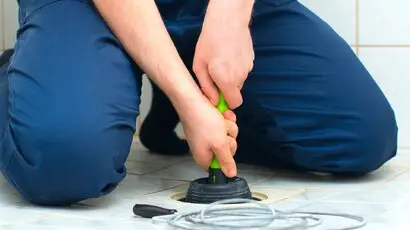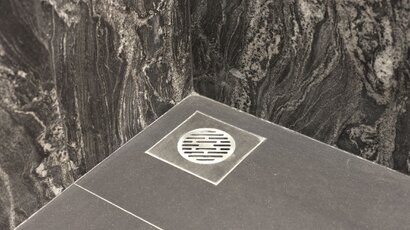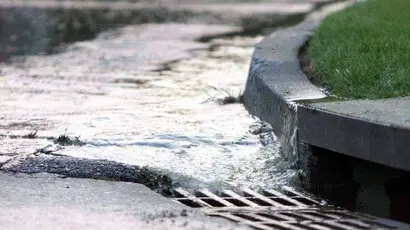When the rain really comes down, stormwater drains play a vital role in steering water away from our homes, preventing flooding and the headaches that come with it. But when these drains get blocked, they can quickly turn into a major issue.
Water that should be channelled away instead pools on the surface, potentially leading to water intrusion into basements, damaging foundations, and creating ideal conditions for mould and other moisture-related issues.
This guide is here to help you deal with the all-too-common headache of a blocked stormwater drain. Be it leaves, debris, or something trickier, we’ve got practical steps to sort out the blockage. Acting quickly not only prevents immediate water mess but also wards off long-term issues, keeping your stormwater system ticking along and your home safe from the elements.
Identifying a Blocked Stormwater Drain
To effectively tackle a blocked stormwater drain, you first need to identify the symptoms indicating a blockage. Here are some telltale signs and common causes:
Common causes for these symptoms often include:
Fallen leaves, twigs, and various garden debris are often the culprits behind clogged stormwater drain entries and internal piping. As seasons change, the accumulation of this organic matter can create significant blockages.
Moreover, sediment and dirt often find their way into the drainage system, slowly building up in the pipes and constricting water flow. Things can get worse when tree roots make their way into the pipes, searching for moisture and causing serious blockages and infrastructure headaches.
Also, there are instances where foreign objects, such as household garbage or children’s toys, may inadvertently enter the drain system, becoming lodged and causing further obstruction.
Recognising these signs early can prevent the blockage from worsening, making the clearing process simpler and less time-consuming. Regular observation and maintenance around your stormwater drains are essential in preventing these issues from taking root.
![]()
Safety Precautions For Stormwater Drain Cleaning
Before you dive into clearing a blocked stormwater drain, make sure safety comes first. Slip on some waterproof gloves and goggles to guard against bacteria and flying bits. Don’t forget sturdy, non-slip shoes to keep your footing on wet ground.
Maintain good hygiene by washing your hands thoroughly after finishing the job, and try to keep your hands away from your face throughout the process to avoid transferring any pollutants. It’s also important to check the weather; if it’s raining heavily or there’s a storm, postpone the task to avoid additional hazards.
When it comes to the actual clearing, use the appropriate tools and know your limits. If the blockage is severe or if you’re unsure about how to proceed safely, it’s better to contact a professional. Never attempt to enter a stormwater drain or work in confined spaces, and keep electrical equipment away from water.
If you’re working near traffic, make sure you’re visible to passing vehicles to prevent accidents. Adhering to these safety measures will help you manage the task at hand effectively while keeping you safe.
Before You Begin
Start by assembling the necessary tools for the job. A plumber’s snake or drain rods will be your primary tools for dislodging blockages. Additionally, have a garden hose on hand for flushing the drain and a bucket for any debris you might extract.
You may also need a screwdriver or wrench if you have to remove a drain grate. If the blockage is visible and within reach, attempt to clear it manually, but proceed with caution to avoid injury from sharp objects or other hazards.
![]()
Clearing the Blockage
Right, let’s get stuck into it:
Step 1: Manual Removal
If you can see the debris and it’s within arm’s reach, go ahead and carefully pull it out with your hands or a tool. Try to get rid of as much as you can to keep future blockages at bay.
Step 2: Using Tools
A plumber’s snake or drain rods can be very effective for deeper blockages. Feed the tool into the drain until you feel resistance, then push and twist to break through the blockage.
Step 3: Flushing the Drain
Once you’ve dislodged the blockage, use a garden hose to flush out the remaining debris. The water should flow freely if the blockage is cleared. If not, repeat the process until it does.
Step 4: Final Checks
Run water through the drain to ensure it’s completely clear. Keep an eye out for any water backing up, which could indicate a partial blockage still in place.
Prevention Tips
Preventing future blockages in your stormwater drains can save you time and trouble. Incorporating drain guards can be an effective first step; they act as a filter, catching leaves and debris before they enter the system. Also, make a habit of periodically inspecting and cleaning out your drains to ensure they remain clear.
![]()
Be conscious of what ends up in your garden. Refrain from disposing of any waste that could contribute to clogs. This includes being cautious about washing away substances like oils and paints, which can solidify and block drains.
Instead, dispose of these materials responsibly, using appropriate waste collection services. These simple steps allow you to maintain a functional stormwater drainage system and reduce the likelihood of future blockages.
When Should You Call a Professional
There are instances where a stormwater drain blockage may be beyond the scope of DIY efforts. If you encounter a particularly stubborn blockage or if you’re not confident in safely managing the task, you should enlist the services of a professional plumber or drainage specialist.
These experts come equipped with specialised tools and diagnostic equipment, such as high-resolution drain cameras, which can pinpoint the problem without guesswork. Their experience and technology allow them to resolve the issue swiftly and effectively, ensuring your drainage system operates smoothly without causing further inconvenience or damage.
Keeping Stormwater Drains Clear with Confidence
Clearing a blocked stormwater drain can be a manageable DIY task with the right tools and a careful approach. This guide is designed to help you prevent minor issues from escalating into bigger problems. Consistent maintenance is crucial, but when a blockage becomes too challenging, it’s important to know when to call in the experts.
If you’re dealing with ongoing drainage troubles or just want the pros to handle it, WP Plumbing in Melbourne is ready to help. Don’t let a blocked drain throw a wrench in your day— get in touch for fast and dependable solutions. Pass this guide on to mates or neighbours who could use it, and remember, whenever you need plumbing help, WP Plumbing is just a call or click away.
Need help with a stubborn stormwater drain blockage? Contact WP Plumbing in Melbourne for expert assistance today!





